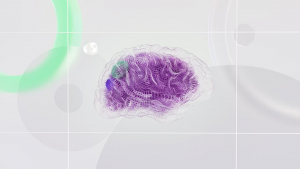How Not To Be Owned by Social Networks and What it Says About Modern Forms of Disaster Recovery
After a prompt from a good friend last night, I started looking at Tarpipe again today. I used to love that service. I’d use it to send photos to Flickr and then on to Twitter and Facebook. It had a compelling use case for events or nonevents if you will. You could share the workflow with other people for posting to a group page. Hashtags helped organize the data that the community shared. Simple and effective.
![]() While checking out the service I saw a reference to another service called ifttt, which stands for “if then that.”
While checking out the service I saw a reference to another service called ifttt, which stands for “if then that.”
ifttt is a simple way to connect different services. You may connect your Twitter updates to Tumblr. A user may connect a blog’s RSS feed to SMS to get immediate notifications when a post goes up. ifttt calls these simple connectors “tasks.” There are 39 different channels available for creating these tasks.
The service asks people to add their “recipes.” These are tasks that people have created and provided to the community. ifttt has more than 3,700 recipes for Twitter. About 2,300 recipes have been added for Facebook. Looking through the recipes it’s apparent that many people use ifttt to backup photos and other media to Dropbox.
Using ifttt with Dropbox allows people to retain their identity without giving it up entirely to Facebook or any other social network. Any form of media may be posted and archived to Dropbox. It’s how not to be owned by the social networks.
It also represents a very a modern way to back up media in case of disaster. The device may be lost but the data remains in an archive. The user can get access to the data in one central place instead of poking around multiple social networks.
The recipes do live up to their name by performing their own task. You’ll see any number of recipes for saving photos to Dropbox that you post to Facebook. But each recipe is a bit different. It’s like looking at recipes for chocolate cake No two are exactly a like. That provides a certain nuance that may also prove to create some valuable mechanisms for organizing unstructured data. You may want to create a recipe for saving photos posted to Twitter. Add a hashtag such as #photos and the archive has its own metadata that can be used for data analysis against other hashtags or different metadata added in as part of the recipe.
It’s a reflection on how consumers are automating their lives without really needing any technical understanding. My colleague Klint Finley describes it as a way people are becoming DevOps oriented in their own way. Intriguing thought.
It’s another example how a very expensive, enterprise oriented solution like data disaster recovery has alternatives that for individuals costs almost nothing. How much longer do you think we’ll see a proliferation of this simple kind of Web oriented service for SaaS providers? This is the kind of recipe that could be used by an enterprise as a way to shadow users social activity that relates to work. And that could provide some new, innovative ways to assure compliance simply by creating recipes that people use when engaging in social activities.
A message from John Furrier, co-founder of SiliconANGLE:
Your vote of support is important to us and it helps us keep the content FREE.
One click below supports our mission to provide free, deep, and relevant content.
Join our community on YouTube
Join the community that includes more than 15,000 #CubeAlumni experts, including Amazon.com CEO Andy Jassy, Dell Technologies founder and CEO Michael Dell, Intel CEO Pat Gelsinger, and many more luminaries and experts.
THANK YOU









